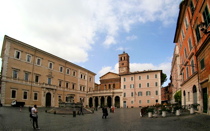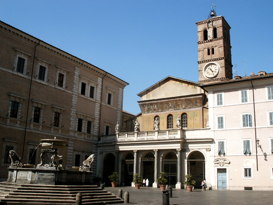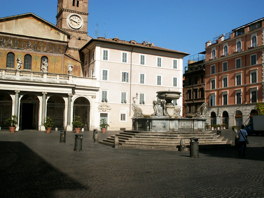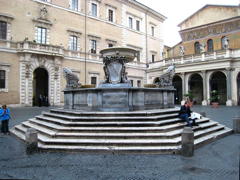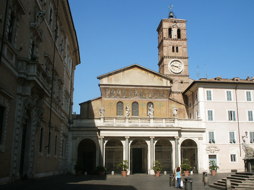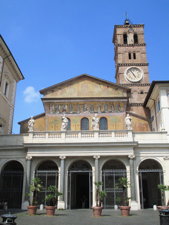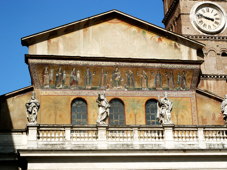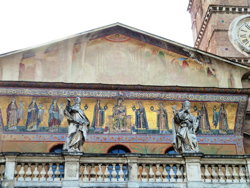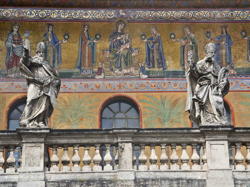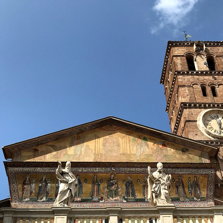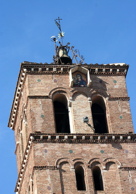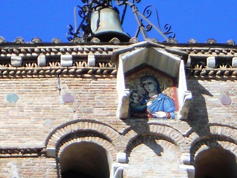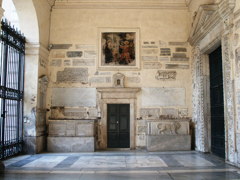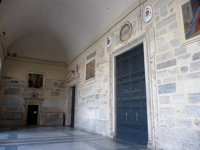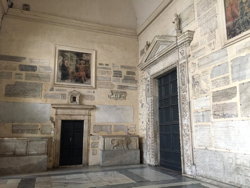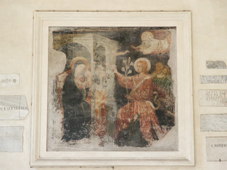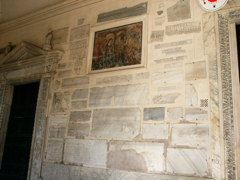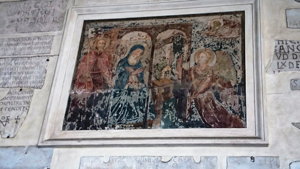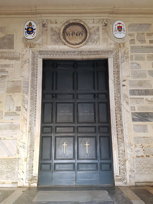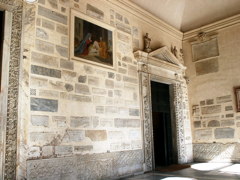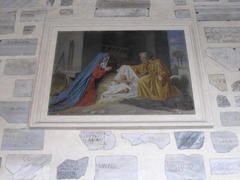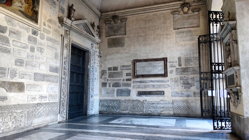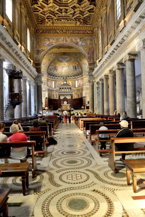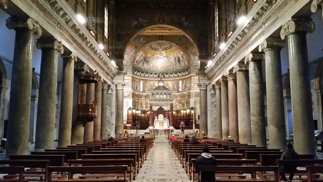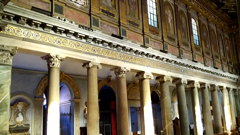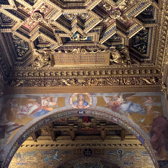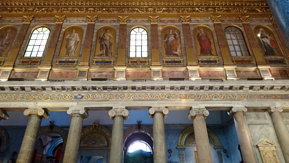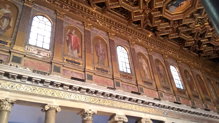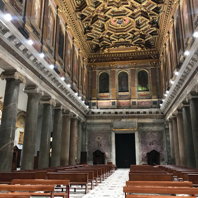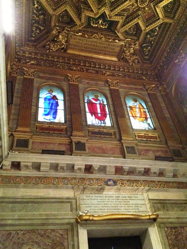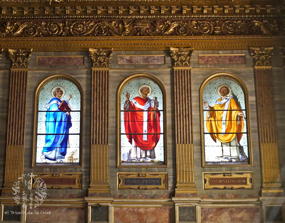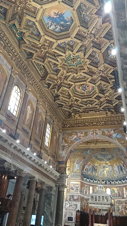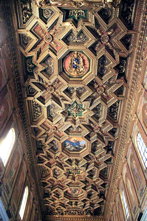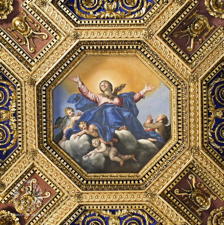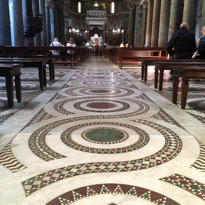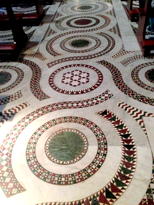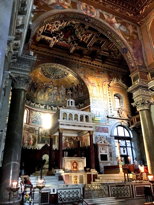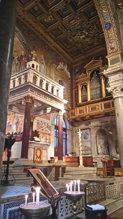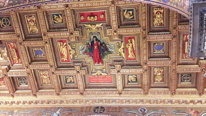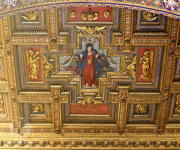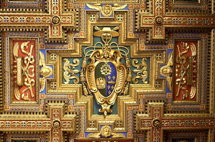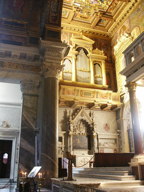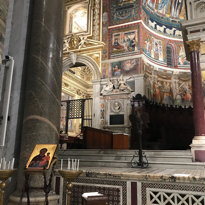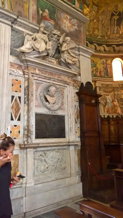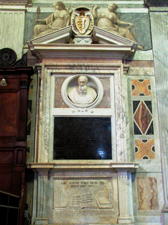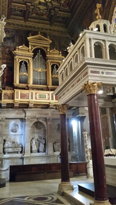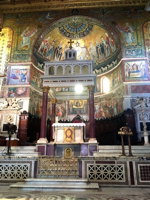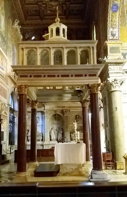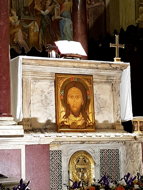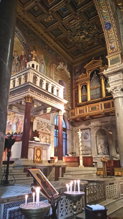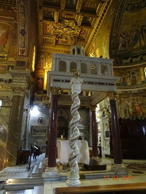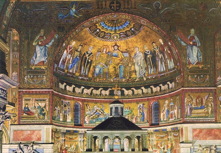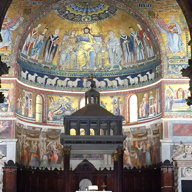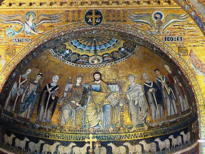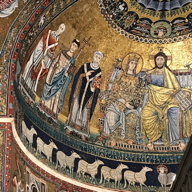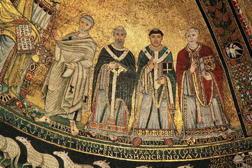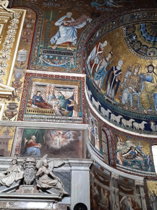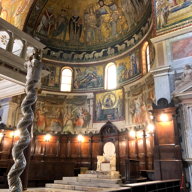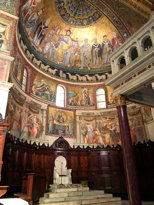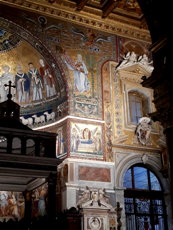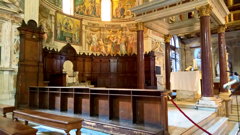The basilica of Santa Maria in Trastevere is one of the oldest churches in Rome, perhaps the first in which mass was openly celebrated. The basic floor plan and wall structure of the church date back to the 340s AD.
This is the queen of the churches in Trastevere. The inscription on the episcopal chair says that it is the first church dedicated to the Mother of God, although actually that privilege belongs to Basilica di Santa Maria Maggiore. In its foundation it is certainly one of the oldest churches in the city.
There are several inscriptions reading Fons olei, meaning 'oil spring'. This refers to a legend claiming that a natural oil spring appeared here some years before the Nativity. The legend was mentioned by St Jerome in the 4th century. He wrote that the Jewish community in Trastevere interpreted it as a sign that God's grace would soon flow into the world. Because of the spring, this became a meeting spot for the first Roman converts to Christianity.
For reference, a plan of the church is available
here.
A Christian house-church, known as Titulus Callixti, was founded here about 220 by
Pope St. Callixtus I (217-222) on the site of the Taberna meritoria, an asylum for retired soldiers. The area was given over to Christian use by the
Emperor Severus when he settled a dispute between the Christians and tavern-keepers, saying, "I prefer that it should belong to those who honor God, whatever be their form of worship, was better than drunkedness and debauchery."
In 340
Pope Julius I (337-352) rebuilt the titulus Callixti on a larger scale, and it became the titulus Iulii commemorating his patronage, one of the original twenty-five parishes in Rome; indeed it may be the first church in which Mass was celebrated openly.
It underwent two restorations in the fifth and eighth centuries. In 1140-43 the church was re-erected on its old foundations under
Pope Innocent II. The richly carved Ionic capitals reused along its nave were pillaged from the ruins of the Baths of Caracalla. When scholarship during the nineteenth century identified the faces in their carved decoration as Isis, Serapis and Harpocrates, a restoration under
Pope Pius IX in 1870 hammered off the offending faces.
